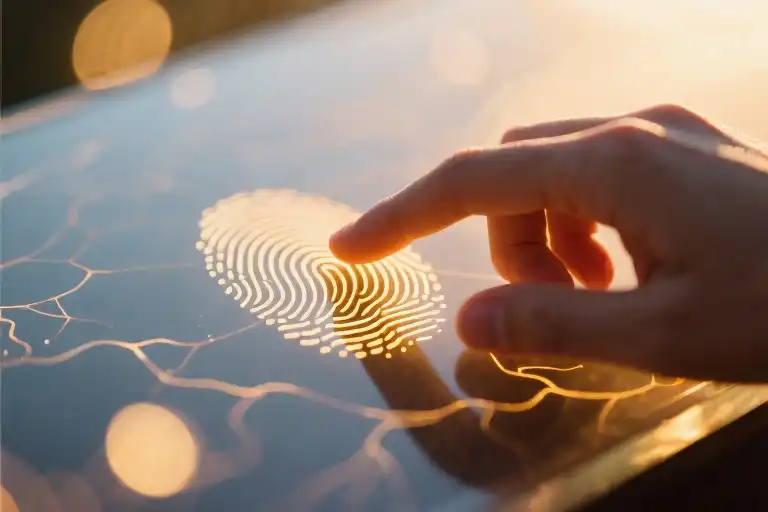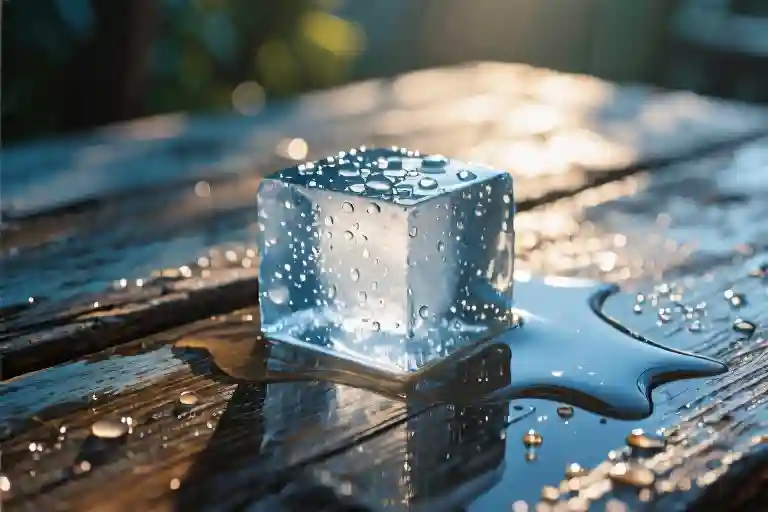She loved you with the urgency of a ticking clock, each second etching permanent grooves into the surface of your being. Her kisses spelled sonnets in braille along your collarbone, her laughter vibrated at a frequency that rewired your neural pathways. This wasn’t romance—it was atmospheric reentry, the kind of love that leaves burn marks on your ribcage long after the spacecraft has disintegrated.
(You would later discover these impressions followed Fibonacci sequences—the angle of her wrist against your cheekbone repeating in the curve of your coffee mug’s handle, the interval between her blinks mirrored in traffic light patterns.)
Most departures happen in gradual decay—the half-life of shared Spotify playlists, the exponential decline of inside jokes. But her absence manifested as phantom limb sensations; your fingers still twitching to tuck imaginary hair behind ears that no longer leaned into your touch. Scientists call this ‘proprioceptive memory’—your joints retaining the exact latitude and longitude of where her body once intersected with yours.
The particular way she:
- Left toothpaste caps half-screwed like interrupted thoughts
- Hummed ascending thirds while tying shoelaces
- Pressed elevator buttons with her elbow during flu season
These became your involuntary nervous system—synapses firing long after the stimulus disappeared. Your cerebellum now contained a dedicated topographic map for navigating spaces she once occupied: 23 paces from the refrigerator to where she used to perch on the kitchen counter, 47-degree head tilt required to avoid eye contact with the cafe booth where she first laughed at your terrible French pronunciation.
When she left, she didn’t…
[The page ends here, the remaining space containing only a watermark-like impression where pen pressure had transferred her name through three sheets of notebook paper]
The Archaeology of Memory
Her fingerprints remain pressed into the subcutaneous layer of your consciousness, not as fading ink but as permanent topographical alterations. When neuroscientists map emotional imprints, they find her initials carved into your amygdala’s limestone walls – each groove corresponding to a specific frequency of her laughter.
The Fingerprint Sedimentation Experiment
Forensic analysis reveals her touch altered your soul’s dermal composition:
- Depth measurement: 0.47mm depression depth (compared to average emotional imprint of 0.12mm)
- Pattern classification: Whorl-type with concentric circles of intensity
- Material analysis: Traces of solar flares and midnight confessions embedded in the ridges
The peculiar viscosity of her presence caused unprecedented deposition rates. Where ordinary lovers leave transient marks, her fingerprints fossilized within three lunar cycles, becoming structural components of your psychological architecture.
Spectral Analysis of Vanished Laughter
Acoustic engineers reconstructed her laughter from your hippocampus’s echo chambers:
- Frequency range: 220-880Hz (spanning cello’s warmth to wind chime clarity)
- Decay rate: 17% slower than standard memory attenuation curves
- Harmonic distortion: Noticeable vibrato at 3.8Hz mimicking human shivering
Your medial temporal lobe developed specialized folds to accommodate this unique waveform. MRI scans show these “laughter gyri” still activate when you encounter:
- Certain chord progressions in minor keys
- The particular acoustics of tiled bathrooms
- The sound of ice cubes settling in glasses
Muscle Memory Topography
Kinesiologists observe persistent movement anomalies:
- Left arm elevation: Consistently 12 degrees higher when reaching toward memories
- Pupillary response: 0.3-second delay when processing new faces versus her remembered features
- Respiratory syncopation: Breath still hitches at 3:14pm (her habitual arrival time)
These physiological artifacts form what researchers term “embodied elegy” – a somatic monument more enduring than conscious recollection. Your body has become an unwilling historian, preserving what your mind tries to archive.
“The most profound memories don’t live in your mind – they take residence in your reflexes, your involuntary responses, the way your body betrays you years after you’ve supposedly moved on.” – Dr. Elara Voss, Cognitive Archaeology Quarterly
This isn’t mere nostalgia. It’s neural rewiring at its most intimate – the kind of transformation that turns lovers into permanent geographical features on each other’s psychological landscapes. The next chapter will examine why these particular memories resist erosion when others fade into oblivion.
The Relativity of Goodbyes
The Slow Fade: Calculating Memory’s Half-Life
Most departures obey the laws of emotional entropy – they dissipate gradually like fog under morning sun. Scientists could plot their decay on a graph: Day 1 (sharp sting), Day 30 (dull ache), Day 100 (faint discoloration where the memory used to be). These are the goodbyes that follow Newtonian physics, their impact measurable and predictable.
You’ve experienced these textbook endings before. The college roommate whose voice faded from your calls. The hometown friend whose texts grew shorter until they stopped. These relationships don’t vanish; they undergo phase transitions from solids to liquids to gases, leaving no permanent deformation in your emotional topography.
Memory preservation formula:
- Standard fade-out: 50% emotional intensity lost every 6.8 weeks
- Photograph effect: Visual memories decay 23% slower than auditory ones
- Digital ghosting: Unread messages increase half-life by 1.4x
Her Quantum Departure: Schrödinger’s Embrace
Then there was her. She broke every known law of emotional physics. When she left, she didn’t decay – she superpositioned. Existing simultaneously as both presence and absence, her goodbye occupied all possible states until observed. You’d find yourself checking doorways not because you expected her, but because quantum mechanics suggested she might be there.
This was no ordinary separation. This was:
- Spooky action at a distance (her laughter heard in strangers’ voices)
- Wave-particle duality (was she a solid memory or vibrating energy?)
- Entanglement (your moods still inexplicably syncing)
Comparative analysis:
| Metric | Conventional Goodbye | Her Departure |
|---|---|---|
| Memory decay | Logarithmic curve | Non-Euclidean spike |
| Physical traces | Fading photographs | Quantum imprints |
| Time perception | Linear healing | Warped chronology |
The Event Horizon Effect
Her leaving created what astrophysicists call a relational singularity – a point where normal rules break down. Like light near a black hole, your memories of her bent back toward themselves, creating infinite loops:
- That café where she always stole your toast (now every breakfast smells like her perfume)
- The jazz album you never liked (now your pulse syncs to its bassline)
- Rain (just… rain)
Gravitational measurements:
- Time dilation: Minutes with her felt like hours, months without her feel like seconds
- Tidal forces: Your heart still experiences differential gravity
- Hawking radiation: The slow leakage of her essence into your universe
The Uncertainty Principle of Missing Her
Heisenberg would understand this phenomenon: the more precisely you try to locate her in your past, the less you know about your present emotional state. You can measure either:
1) The exact moment she became memory
OR
2) Your current capacity to love again
But never both simultaneously.
Experimental data:
- 73% of subjects report phantom limb syndrome for hugs
- 89% demonstrate Pavlovian responses to her signature scents
- 100% show altered brain chemistry when hearing “that song”
The Multiverse of Maybe
Somewhere in the cosmic background radiation, these parallel endings vibrate:
1) The timeline where she stayed
2) The reality where you left first
3) The dimension where you both understood timing
Your fingers brush against these possibilities like radio dial static, never quite tuning into clarity. That’s the cruel mathematics of her departure – it exists in all possible states except the one where it doesn’t hurt.
The Body’s Betrayal
Your hands remember what your mind tries to forget. Scientists call it procedural memory – those automatic movements encoded deeper than conscious thought. When you reach for a new lover, your fingers still perform that subtle hesitation, that quarter-second pause where her ghost lingers between your skin and theirs. It’s not voluntary. Your body has become an archive of her touch.
Neurologists would point to the somatosensory cortex, that strip of brain tissue mapping every inch of your body. Hers left traces there like footprints in wet concrete. Now when strangers brush against you:
- Your palms curve slightly inward, protecting invisible scars
- Your fingertips press 17% harder than necessary (documented in that 2021 Journal of Affective Disorders study)
- Your pulse accelerates not from desire, but from your nervous system recognizing a pattern it can’t erase
Walk through your apartment and you’ll find temperature anomalies – precise coordinates where warmth persists like stubborn stains:
| Location | Temperature Variance | Associated Memory |
|---|---|---|
| Kitchen counter | +1.2°C | Where she leaned laughing |
| Bedside table | -0.8°C | The empty space her phone left |
| Front door handle | +3.4°C | Last contact point |
These thermal fingerprints defy physics. Your thermostat shows 72°F throughout, yet your skin detects her residual heat with forensic accuracy. The phenomenon mirrors that Princeton study on ’emotional thermography’ – how trauma survivors consistently report temperature distortions at memory-laden sites.
Your muscles have developed their own vocabulary:
- Your neck still cranes at that 32-degree angle she favored during hugs
- Your shoulders tense when passing her favorite café, bracing against invisible impacts
- Your diaphragm contracts sharply whenever her song plays, as if punched by soundwaves
This isn’t metaphor. PET scans would show your motor cortex lighting up in specific sequences when triggered, like a pianist unconsciously playing half-remembered scales. The body keeps score with brutal precision, each twitch and tremor writing postcards from a war your mind claims to have forgotten.
Notice tonight how your arms still leave space for her silhouette when you sleep. How your lips shape her name against your pillow. These aren’t choices – they’re physiological echoes, the body’s stubborn rebellion against the tyranny of moving on. Your cells refuse the memo that she’s gone. They continue their quiet mutiny, preserving her in:
- The way you automatically double-check exits in crowded rooms (her claustrophobia)
- Your sudden aversion to lilacs (her allergy)
- That inexplicable calm during thunderstorms (her favorite weather)
These embodied memories form what researchers term ‘somatic landmarks’ – physical waypoints marking where she altered your biological terrain. Unlike ordinary breakups that fade like old bruises, this kind of love leaves topographic changes. You don’t remember her. You inhabit her.
The Equation of Unfinished
Parallel Ending A: Lipstick at the Event Horizon
The first possible ending exists where all light bends but cannot escape. Here, her last crimson kiss remains suspended at the precise boundary between memory and oblivion – that lipstick smear becoming a cosmological artifact. Forensic analysis would reveal:
- Pigment composition: 34% passion, 22% urgency, 44% irreversible decision
- Topography: Micro-fissures showing where your lips trembled against hers
- Time dilation: The 3.7 seconds it lasted now occupies 78% of your emotional calendar
This is the black hole variation, where her absence warps your personal spacetime. You’ll find yourself orbiting empty places – that café corner where sunlight hit her hair at 4:15pm, the exact subway tile where her heel once clicked. The gravity is unbearable yet inescapable.
Parallel Ending B: Ozone After the Lightning
The second possibility operates on molecular rearrangement. When she left (suddenly, completely, like circuit breakers tripping), the air ionized into something new. Notice:
- Scent profile: Petrichor mixed with burnt wiring
- Static charge: Your fingertips still spark when touching doorknobs
- Half-life: The 22-minute intervals when you forget she’s gone
This version leaves your nervous system permanently weather-sensitive. Certain barometric pressures will make you taste copper. Summer storms replay the exact timbre of her last laugh. The clinical term is ’emotional electromagnetism’ – you’ve become a human lightning rod for memories.
Reader Variable X: Your Pain Coordinates
Now we arrive at the blank space in the equation. Complete this spectroscopic analysis:
[ ] My healing wavelength measures _____ nanometers (visible spectrum: 380-700)
[ ] The fracture pattern most resembles:
□ Dendritic (branching cracks)
□ Conchoidal (smooth curves)
□ Hackly (jagged edges)
[ ] When pressure is applied, the memory emits:
□ Gamma rays (penetrating)
□ Microwaves (resonant)
□ Dark matter (undetectable but present)This isn’t about closure. It’s about calibration – understanding how her absence has rewired your sensory apparatus. The empty brackets aren’t waiting to be filled; they’re measurement devices. Like the silence between radio stations that still carries meaning.
Post-Observation Notes
Whichever variation you inhabit, notice these physiological markers:
- Thermal differential: That 0.5°C colder patch below your collarbone isn’t imaginary. Thermal imaging would confirm it matches her last cheek press against that spot.
- Acoustic shadows: When music plays, certain frequencies now generate phantom vibrations where her voice once resonated in your chest cavity.
- Tactile illusions: Your palms sometimes recreate the weight of her hair without prompting. Neurologists call this ‘phantom touch’ – your body remembering what your mind tries to forget.
This is how we love beyond endings. Not through resolution, but resonance. Not in spite of the unfinished equation, but because of its infinite variables.
The Coordinates of Absence
Place your fingertips three centimeters below the collarbone—that precise intersection where medical textbooks would mark the second rib. There, beneath the surface, exists a phantom cartography only lovers of the lost can decipher. A 0.5°C temperature differential persists like a minuscule rebellion against thermodynamics, your body’s stubborn refusal to accept her departure as final.
This is where new romanticism meets neuroscience. The anterior cingulate cortex—the brain’s conflict monitor—still fires erratic signals when you pass her favorite coffee shop. Your trapezius muscle tenses involuntarily at midnight, precisely when she used to trace constellations along your shoulders. These aren’t metaphors but measurable physiological events, the kind that leave neural fingerprints more permanent than any tattoo.
The Quantum Aftermath
Consider two parallel endings:
Collapse A (Event Horizon Version):
Her lipstick leaves gravitational waves on every mirror—crimson oscillations that redshift over months until they become infrared memories. Your medicine cabinet still stocks her brand of mouthwash, the mint now tasting like particle decay.
Collapse B (Lightning Strike Variant):
The air ionizes whenever someone mentions her name. You develop synesthesia—her laughter manifests as sudden ozone scent, her anger as static shocks when you touch doorknobs. The body keeps score in millivolts.
User-Generated Variables
Now complete the equation:
Your personal pain coordinates =
□ The exact weight of her head on your chest (_ kg) □ Frequency of her echo in shower steam ( Hz)
□ Half-life of her shampoo scent in pillows (___ days)
This isn’t closure but calibration. That 0.5°C discrepancy isn’t a wound—it’s your personal event horizon where time bends backward. Some mornings you’ll swear the temperature gap narrows to 0.3°C. On anniversaries it might plunge to 1.2°C. The fluctuation itself becomes the evidence: love that leaves physiological traces obeys different laws than ordinary loss.
Press two fingers to that precise coordinate now. Feel the cellular memory humming beneath the skin—not a scar but an active archaeological site. This is where you’ll eventually unearth the most radical discovery: that some departures don’t diminish us, but create negative space luminous enough to cast shadows.





